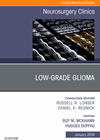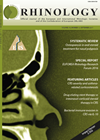
Journal Reviews archive for March 2019
DVT prophylaxis in cranial procedures
Deep vein thrombosis (DVT) is a result of disturbed balances in blood flow patterns, blood clotting factors promoting coagulation and vessel wall endothelial injury. The subsequent disruption of coagulation and fibrinolysis mechanisms lead to venous clot formation and propagation. The...
Perioperative management of the head and neck cancer patient
The perioperative care of patients with head and neck cancer is complex and requires significant preoperative planning and patient education. The issues include analgesia, antibiotics, stoma and wound care, general and chest physiotherapy, thromboprophylaxis and nutrition. This article provides a...
Assessment and management of dysphagia in the elderly
This article covers dysphagia in older patients, which is an important topic due to an ageing population, and a relatively common symptom that we see in clinic. Dysphagia could be due to presbyphagia secondary to changes in head and neck...
How to tackle the problem of ciprofloxacin-resistant ear infections?
The growing issue of ciprofloxacin-resistant ear organisms is certainly a pertinent one. The situation here in the UK, where ototoxic topical drops are frequently given initially in the presence of pus and a perforation, differs markedly from elsewhere where fluoroquinolones...
Sinonasal inverting papilloma: who is at risk of recurrence?
This study from a tertiary sinus surgery unit, describes some useful information in the follow-up of sinonasal inverted papilloma patients - in particular those likely to recur - and discusses the optimal staging systems to use to attempt to predict...
Predicting CSF leaks pre FESS: Gera classification - a new tool?
An interesting study from Italy looking at an anterior skull base classification that may be useful in predicting risk of intraoperative CSF leak during FESS surgery. Traditionally we have used the Keros classification system, developed in 1962 to categorise olfactory...
Dispelling the myths around stuttering and bilingualism
There are many myths around language development in bilingual children, and an increased risk of stuttering in bilingual children is one of these misperceptions. In research studies, speech and language therapists have identified higher numbers of dysfluencies in speech samples...
Stuttering and bullying - everyone’s business
This article emphasises that bullying (distinct from teasing- the former being defined as repeated actions intended as harmful, compared to good-natured interactions enjoyed by everyone) is an issue that can impact significantly on a child or young person’s ability to...
Double suspension sutures for obstructive sleep apnoea
This study examines the benefit of an operation that targets the lateral pharyngeal wall. The double suspension sutures are, in essence, a suture through the palatopharyngeus muscle which is then tied around the hamulus in the retro molar area. This...












